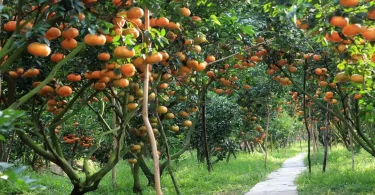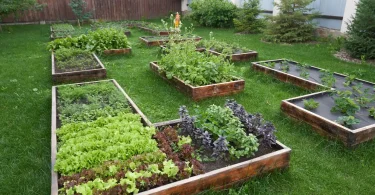Growing tropical fruits is a dream for many gardeners, but climate limitations often make it difficult. If you live in a temperate or even cold region, maintaining the heat and humidity required by tropical fruit planting can feel nearly impossible. However, greenhouse gardening changes everything. With the right setup, plant selection, and care routine, you can enjoy mangoes, bananas, papayas, guavas, and even exotic fruits right at home.
This blog explores practical, effective, and brilliant tropical fruit planting ideas designed specifically for greenhouse gardeners. Whether you’re a beginner or someone looking to upgrade your greenhouse setup, this guide will help you create a productive, thriving tropical oasis.

1. Why a Greenhouse Is Ideal for Tropical Fruit Planting
Tropical fruits naturally grow in warm, humid climates with consistent temperatures. A greenhouse allows you to replicate these conditions, offering:
Controlled Temperature
Most tropical fruits prefer temperatures between 70–85°F (21–29°C). Greenhouses trap and maintain heat, keeping the environment ideal even during cool nights.
Humidity Management
Tropical fruit plants thrive in humidity levels of 60–80%. A greenhouse helps maintain this range with misters, water trays, or automated humidifiers.
Extended Growing Season
While outdoor climates limit growth to specific months, your greenhouse can provide a year-round tropical environment.
Protection From Pests and Weather
Tropical fruits can be sensitive to wind, frost, heavy rainfall, and pests. A greenhouse minimizes exposure and keeps the plants safe.
2. Choosing the Best Tropical Fruits for Greenhouse Gardening

Not all tropical plants perform well indoors. Choose varieties that adapt to container or greenhouse growth.
Mango
Look for dwarf mango varieties such as:
- Julie
- Cogshall
- Ice Cream
These grow well in pots and respond positively to greenhouse heat.
Banana
Perfect for greenhouses thanks to their fast growth. Choose compact varieties like:
- Dwarf Cavendish
- Super Dwarf
Bananas love humidity and moist soil.
Papaya
Papayas grow quickly and produce fruit within a year. They require good airflow and well-draining soil.
Guava
Guava is hardy and adapts easily to container gardening. Varieties like Lemon Guava and Tropical White perform well indoors.
Pineapple
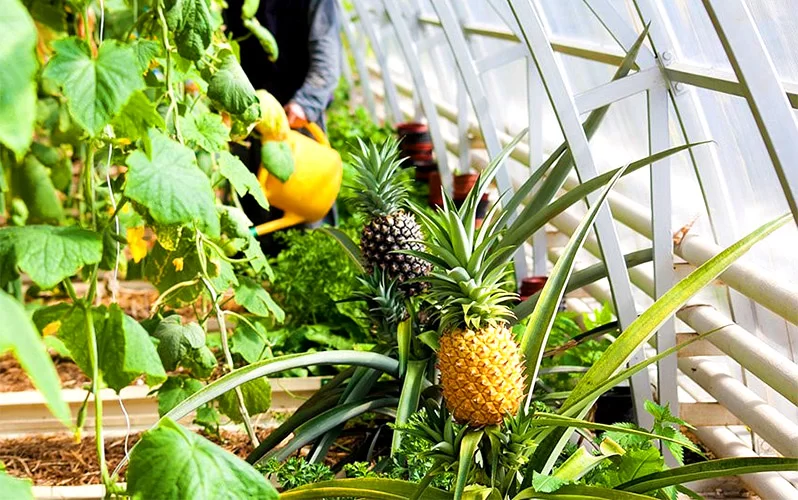
These small, hardy plants thrive in greenhouse warmth and require minimal space.
Passionfruit
A climbing vine perfect for vertical gardening inside greenhouses.
Dragon Fruit
Its cactus-like nature makes it low maintenance. It requires support for climbing.
Lychee and Longan
Though slightly more demanding, they flourish in stable humidity and warmth.
3. Brilliant Planting Ideas for a Successful Tropical Greenhouse
Idea 1: Use Tiered Planting and Vertical Space
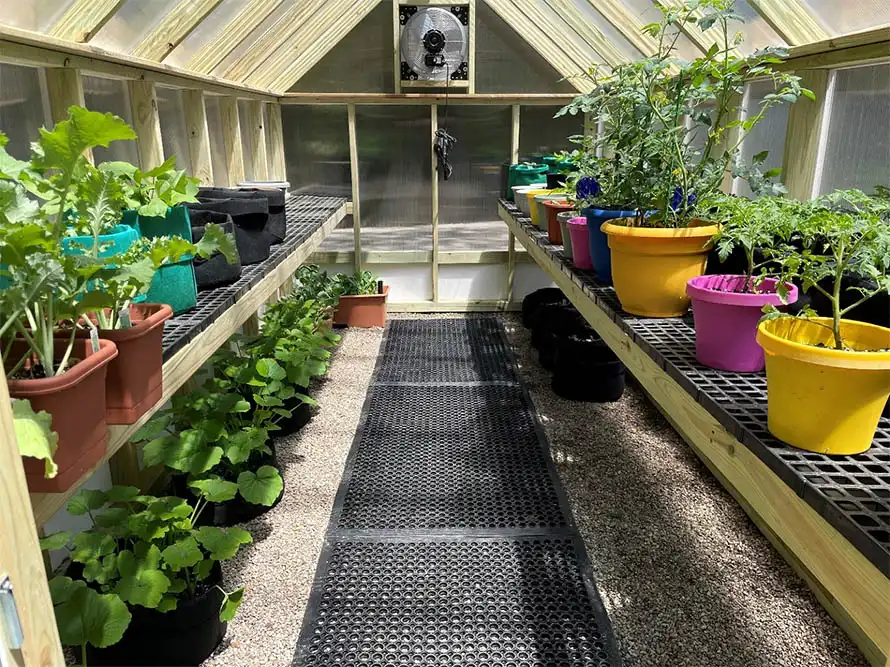
Greenhouses have limited floor area, so utilize height:
- Install trellises for passionfruit and dragon fruit
- Use shelves for smaller pots
- Create zones for small, medium, and large plants
This increases production without crowding.
Idea 2: Create a Mini Tropical Microclimate
Mimic tropical forest conditions:
- Use pebble trays filled with water to boost humidity
- Add automatic misters
- Group plants together to create a shared humid zone
Microclimates help tropical plants thrive even in a greenhouse that fluctuates.
Idea 3: Select High-Quality, Well-Draining Soil
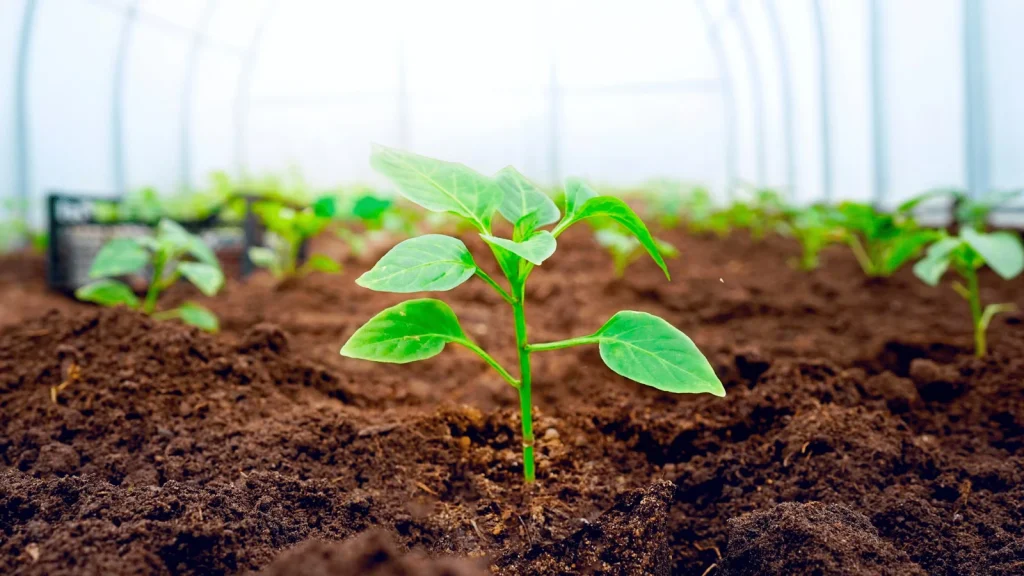
Tropical fruits hate waterlogged roots. The ideal mix includes:
- Coconut coir
- Perlite
- Compost
- Organic matter
Good drainage prevents root rot and ensures steady growth.
Idea 4: Install Supplemental Grow Lights
Winter days are shorter in cooler regions. Use LED grow lights to:
- Maintain a 12–14 hour light cycle
- Promote flowering
- Encourage strong fruit set
Red/blue spectrum or full-spectrum LED lights work best.
4. Perfect Watering & Fertilizing Routine

Watering
- Keep soil moist but not soggy
- Water deeply 1–2 times per week
- Increase frequency in summer
- Reduce in winter but do not let soil dry completely
Fertilizing
Tropical fruits are heavy feeders. Use:
- Balanced fertilizer (10-10-10) in early growth
- High potassium fertilizer during fruiting
- Organic choices: compost tea, fish emulsion, seaweed extract
Feed every 3–4 weeks during the active growing season.
5. Maintaining Ideal Greenhouse Conditions
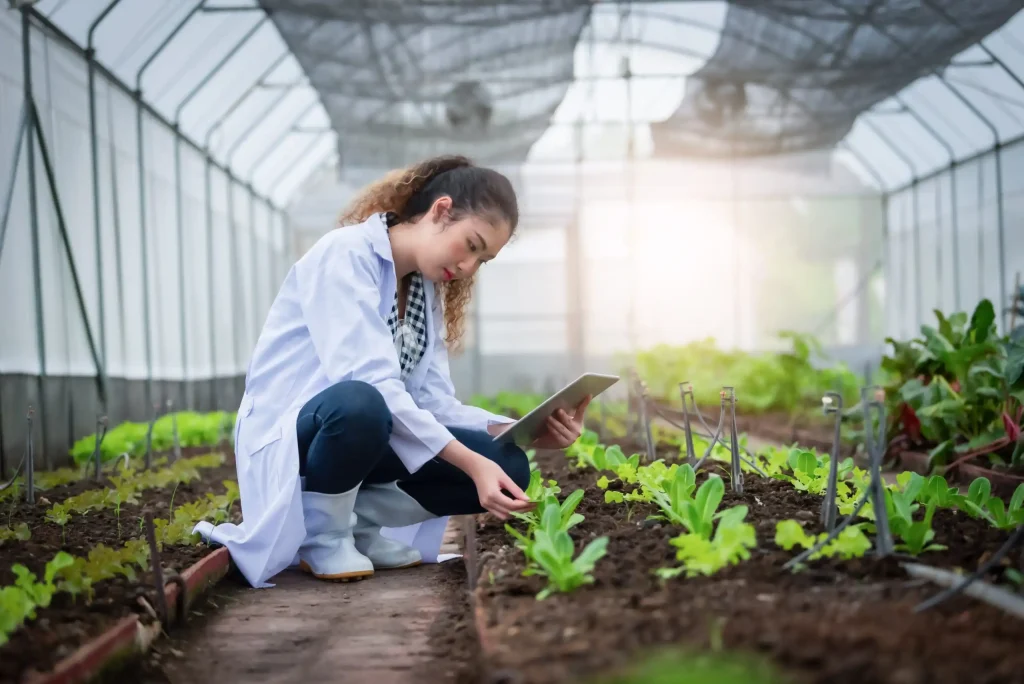
Temperature
- Daytime: 70–85°F (21–29°C)
- Night: 65–75°F (18–24°C)
Install a heater if temperatures drop below 60°F (15°C).
Humidity
Target: 60–80%
Use:
- Humidifiers
- Misting systems
- Water trays
Ventilation
Tropical fruits need fresh air to prevent fungal growth.
Use:
- Roof vents
- Side vents
- Oscillating fans
Avoid stagnant, overly moist air.
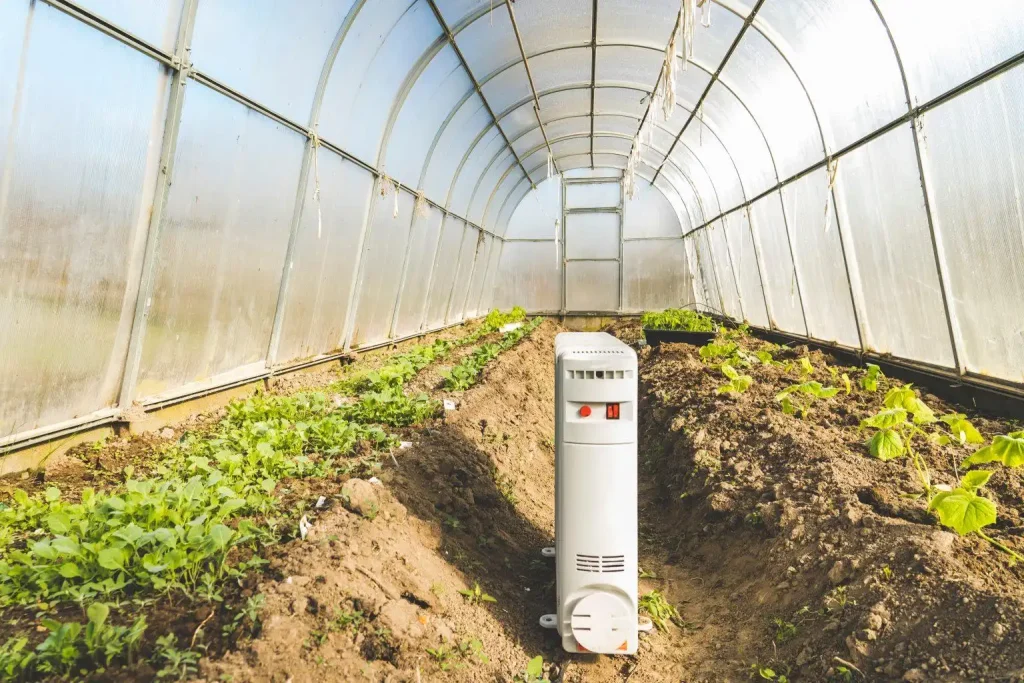
Troubleshooting Table for Tropical Fruit Greenhouse Gardening
| Problem | Symptoms | Cause | Fix |
|---|---|---|---|
| Yellowing Leaves | Pale or drooping leaves | Overwatering or nutrient deficiency | Reduce watering, improve drainage, apply balanced fertilizer |
| Leaf Drop | Sudden fall of healthy leaves | Cold drafts or low humidity | Increase temperature & humidity, seal greenhouse gaps |
| Slow Growth | Small leaves, weak stems | Lack of light or poor soil | Add grow lights, repot with richer soil mix |
| Fruit Dropping Early | Small fruits fall before ripening | Low pollination or stress | Hand-pollinate, maintain stable temp & humidity |
| Brown Leaf Edges | Crispy or scorched edges | Low humidity or excessive sun | Mist plants, provide shade cloth |
| Root Rot | Mushy roots, foul smell | Waterlogged soil | Repot with well-draining soil, avoid overwatering |
| No Flowers | Mature plant but no blooms | Insufficient light or wrong nutrients | Increase light hours, apply high-phosphorus fertilizer |
| Pest Infestation | Sticky leaves, visible insects | Poor ventilation | Use neem oil, introduce beneficial insects |
| Mold on Soil | White/grey fuzzy growth | High humidity, poor airflow | Increase ventilation, remove topsoil layer |
Conclusion
Greenhouse gardening opens the door to growing a wide range of tropical fruits that would otherwise be impossible in cooler climates. By controlling temperature, humidity, light, and soil conditions, you can create a thriving mini–tropical ecosystem right at home. Whether you’re growing bananas, mangoes, papayas, guavas, or exotic fruits like passionfruit and dragon fruit, the key lies in consistent care, smart space management, and understanding each plant’s unique needs.

